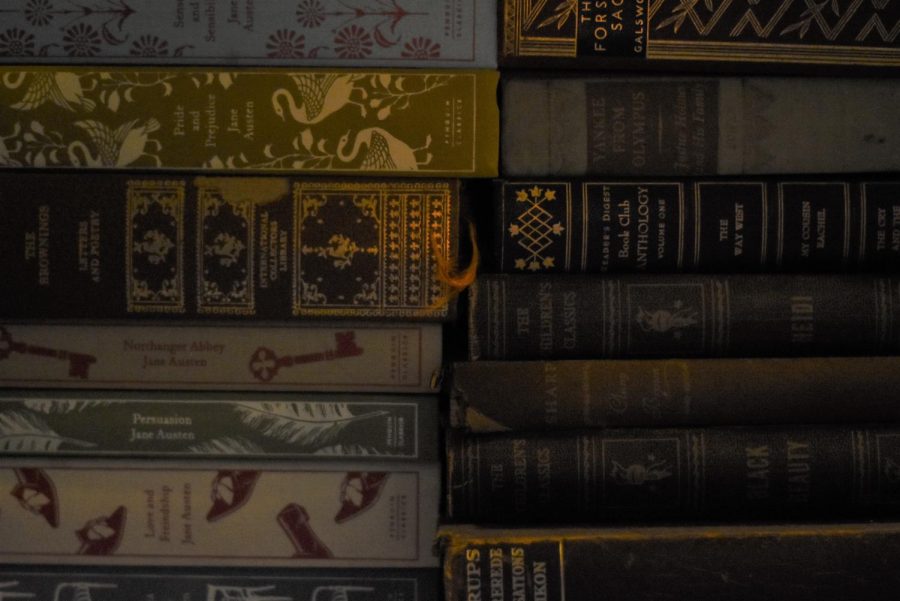The Superiority of Period Pieces
Older works stack up to assemble the visual beauty of period piece novels. These books surpass being exclusive to outer charm, however, written in a talent that matches their tangible state.
My love for period piece novels are as follows: bound to those sickly wonderful pages from the very first of our meeting.
There is something so special about a book of another time, even comparing it to a novel of modern dialect and plot line is almost comedic.
I believe that reading, aside from its educational purposes, serves mainly as a method of escapism. With that being said, attempting to enjoy a book with dialogue as text messages and emails transports me to a land of dull familiarities.
Instead of an escape, I’m brought back to my world, with the blandness and overused reliance on technology. I don’t feel excited nor intrigued after reading, but rather bored and uninspired.
With period piece works, however, if a character is in need of something or seeking out another individual, they will either do so in person, or by letter.
These scenarios couldn’t pester, or remind me of the thousands of emails I ought to reply to at some point. Instead, these older forms of interactions excite me, as they are foreign to what I’m accustomed to. With these scenarios,I feel that the outcomes aren’t so predictable.
With this continuous unpredictability also comes that similar ideology of period piece authors to repeatedly design a more creative plotline. This isn’t to say that modern works aren’t inventive, but with every period piece novel I’ve read, there hasn’t been a single modern-based work that surpassed the creativity of older ones.
This creativity is specifically used with the description of inanimate objects or places, which is prioritized over more tedious descriptions. The sea, the sky, and wind, are the typical subjects of description period piece authors use. Authors then give these inanimate things feelings, emotions, and personalities. It directs the attention away from the characters for a few fleeting moments, like in Oscar Wilde’s The Picture of Dorian Gray where the author consistently brings life to a painting just as he did with the protagonist, Dorian Gray himself. In those times, a certain allure is added to the story that many contemporary books lack.
Although, this praise should not fall short to modern authors, as many of them, like older writers, possess the ability to create period piece novels that encompass that same otherworldly feeling while reading it.
Madeline Miller (a modern author for period piece works like Circe), for example, possesses that talent to an unfairly wonderful extent. She is known to exert symbolism through inanimate objects and things like the sea, and she does so in a way that’s extraordinarily beautiful.
The beauty of period piece authors, like Madeline Miller and older writers including Jane Austen and Oscar Wilde, are so impactful that it makes you want to feel everything being written, even when the outcome is hurtful to the reader.
Character’s attire is also one of the many advantages of older-based works, which is always ten times better than any plain t-shirt and jeans. Whether it’s a silky gown, antique ruffled top, exaggerated jewelry or a pointed shoe, every outfit is built so artistically that you could easily read pages and pages on a single shirt. I’ve fallen into that trap one too many times, and I’ve truly never been disappointed.
Redundancy, boredom, and a lack of creativity is never an obstacle with period piece novels, and I will easily defend that claim time and time again, or however long it takes for others to join the centuries-old plotline train.
Your donation will support the student journalists of San Juan Hills High School. Your contribution will allow us to cover our annual professional memberships as well as equipment and other costs associated with bringing you high quality student journalism.

This is Eva Smedeby’s senior year in high school as well as her fourth year writing for The Express. She is excited to be part of the newspaper staff...






